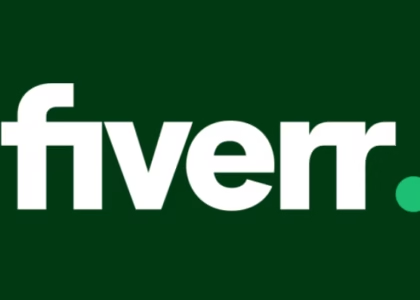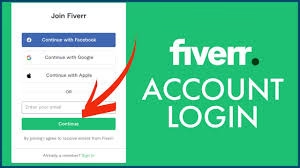PBN Backlinks PBN stands for Private Blog Network. It’s a network of websites, usually owned by a single entity, created specifically to build backlinks to a “money site” (the website you want to rank higher on Google). The goal? Boost rankings through increased authority.
These sites aren’t built for real users—they’re built for search engines. The idea is to leverage the domain authority of old, expired websites that already have backlink profiles to pass link juice to your primary site.
How They Differ from Natural Backlinks
Natural backlinks come organically. Think: someone loving your content and linking to it on their blog. PBN backlinks, on the other hand, are manufactured. They’re intentional, controlled, and can be placed exactly where and how you want. That level of control is what makes them attractive—and dangerous.
The History and Evolution of PBNs
Early Use in SEO
Back in the early 2010s, PBNs were the shortcut to ranking fast. Buy some expired domains with decent authority, throw up some content, link to your site, and boom—top of Google.
SEO was the Wild West, and PBNs were goldmines.
Google’s Crackdown and Algorithm Updates
Of course, Google caught on. Starting around 2014-2015, the search giant began targeting networks. Manual penalties. De-indexation. Fear spread fast.
Still, PBNs didn’t die. They just evolved. Now, it’s about hiding footprints and keeping things looking “natural.”
Why SEOs Still Use PBNs
The Control Factor
Ask any SEO: control is king. With PBNs, you control:
- Anchor text
- Link placement
- Page content
- Indexing
- Link velocity
No begging for guest posts. No waiting. You’re the boss.
Immediate SEO Boost
If done right, a well-placed PBN backlink can give your site a serious lift in the SERPs—sometimes overnight. That’s hard to ignore, especially in competitive niches.
Anatomy of a Private Blog Network
Expired Domains
PBNs start with expired or auctioned domains that have:
- Clean backlink profiles
- No spam history
- Niche relevance (if possible)
- DA/DR (Domain Authority/Domain Rating)
These domains are often found on sites like GoDaddy Auctions, SpamZilla, or DomCop.
Hosting Diversification
Using the same hosting for all your PBN sites? Rookie mistake. That’s a footprint. Pro PBN users spread sites across multiple hosts, IPs, and nameservers.
Some even use CDN services like Cloudflare to mask hosting.
Unique Content and Design
Gone are the days of spun content. Today’s PBNs often use well-written, human-like articles with unique themes to pass the sniff test.
Good PBNs look like real blogs. They have menus, sidebars, comments—even fake personas.
How to Build a PBN (Step-by-Step)
1. Finding Expired Domains with Authority
Start with tools like:
- SpamZilla
- ExpiredDomains.net
- SEMrush / Ahrefs for backlink checking
Look for:
- Domains with real backlinks (Forbes, BBC, etc.)
- Clean anchor profiles (no porn, pills, or gambling)
- Topical trust flow
2. Hosting and IP Diversification
Use different providers like:
- Namecheap
- BlueHost
- HostGator
- DigitalOcean
You can also use SEO hosting or PBN-specific hosting services with unique IPs per site.
3. Creating Quality Content
Write (or outsource) real content. At least 500–1,000 words per post. Mix up topics, don’t make every post a backlink post.
Pro tip: Create pillar content and mix in some affiliate/product reviews to look more legit.
4. Linking Strategically to Your Money Site
- Vary anchor texts: exact match, partial match, branded, naked URL
- Use contextual links—not just footers or sidebars
- Don’t link out from every post
- Link out to authority sites (Wikipedia, Forbes) occasionally
Risks of Using PBNs
Google Penalties
If Google spots your network, you risk a manual action. That could kill your site’s rankings—sometimes permanently.
Deindexation
Worse than a penalty? Google deindexing your entire PBN. All that money and effort? Gone.
Brand Reputation Risks
If your competitors or clients discover you’re using PBNs, it might hurt your reputation, especially if you’re in a white-hat industry like healthcare or finance.
How to Spot a PBN Backlinks
Footprint Detection
Look for:
- Same registrars or hosting across sites
- Thin content with outbound links
- Same or similar themes
- No real engagement (no social media, no comments)
Tools to Identify PBN Links
Use:
- Ahrefs
- Majestic
- Screaming Frog
- BuiltWith (to detect hosting similarities)
Pros and Cons of PBN Backlinks
Advantages
- Full control
- Faster results
- No outreach required
- Can be scaled (if done carefully)
Disadvantages
- Risky if misused
- Time and cost intensive
- Needs constant maintenance
- Can be devalued at any time
PBN vs. White Hat SEO Techniques
Short-Term vs. Long-Term Gains
PBNs give faster results but carry risk. White-hat strategies (guest posting, PR, content marketing) are slower but more sustainable.
Risk-Reward Analysis
If you’re in a churn-and-burn niche (like weight loss pills), PBNs might be worth it. But for long-term businesses, it’s a risky gamble.
How to Stay Under the Radar
Tips to Avoid Detection
- Use different WHOIS info
- Spread out hosting/IPs
- Avoid interlinking PBN sites
- Mix dofollow and nofollow links
- Don’t use site-wide links
Best Practices for Safe PBN Usage
- Use PBN links sparingly
- Mix with natural links
- Regularly update PBN content
- Avoid over-optimizing anchor texts
Best Tools for Managing PBNs
Domain Hunting Tools
- SpamZilla
- DomCop
- GoDaddy Auctions
Hosting Solutions
- EasyBlogNetworks (EBN)
- Bulk Buy Hosting
- SeekaHost PBN Hosting
SEO Tracking Tools
- Ahrefs
- SerpRobot
- RankMath (WordPress Plugin)
- Google Search Console
Alternatives to PBN Backlinks
Guest Posting
Still effective. Build relationships, get quality links, and boost your brand authority.
HARO and Digital PR
Help A Reporter Out (HARO) can land you high-authority backlinks if you pitch well.
Niche Edits and Link Outreach
Buy links in existing aged articles. Often safer and more natural-looking than PBN links.
Case Studies of PBN Success
Niche Site Success Stories
Many affiliate marketers have scaled niche sites to 5-figure months using smart PBN strategies. Think sites in home decor, outdoor gear, and supplements.
Agency Tactics and Results
Some “gray hat” agencies use hybrid models—white hat on the surface, PBNs in the backend—to dominate client rankings with little overhead.
Is It Worth It in 2025?
Changing SEO Landscape
Google is smarter. AI is better at sniffing out manipulation. But PBNs still work—if you know what you’re doing.
When to Use PBNs (and When Not To)
Use them when:
- You understand the risk
- You can afford the fallout
- You’re in a disposable niche
Avoid them if:
- You’re building a long-term brand
- You’re in a regulated industry
- You don’t have the budget or experience
Conclusion
PBN backlinks are like nitro boosters in a car race. Use them right, and you’ll zoom past the competition. Use them wrong, and you might crash and burn. In 2025, they’re not dead—but they’re definitely riskier.
If you’re going to use them, do it wisely. Build with quality, diversify everything, and stay under the radar. But remember: short-term wins can come at a long-term cost.
Always weigh the risk vs. reward before diving in.
FAQs
Are PBN backlinks legal?
Yes, they’re legal—but they violate Google’s guidelines. So while you won’t get sued, you can get penalized or deindexed.
Can PBNs still rank sites in 2025?
Absolutely. If used carefully, they’re still effective. But the margin for error is razor thin.
How many PBN links should I use?
There’s no magic number. Start with a few, mix them with white-hat links, and track your rankings closely.
What’s the safest way to use PBNs?
Avoid footprints, keep your PBNs looking real, and don’t rely solely on them. Think of them as part of a broader strategy.
Do PBN links work for local SEO?
Yes, especially if the PBN domains have geo-relevance. But local SEO also thrives on citations and Google My Business optimization.






